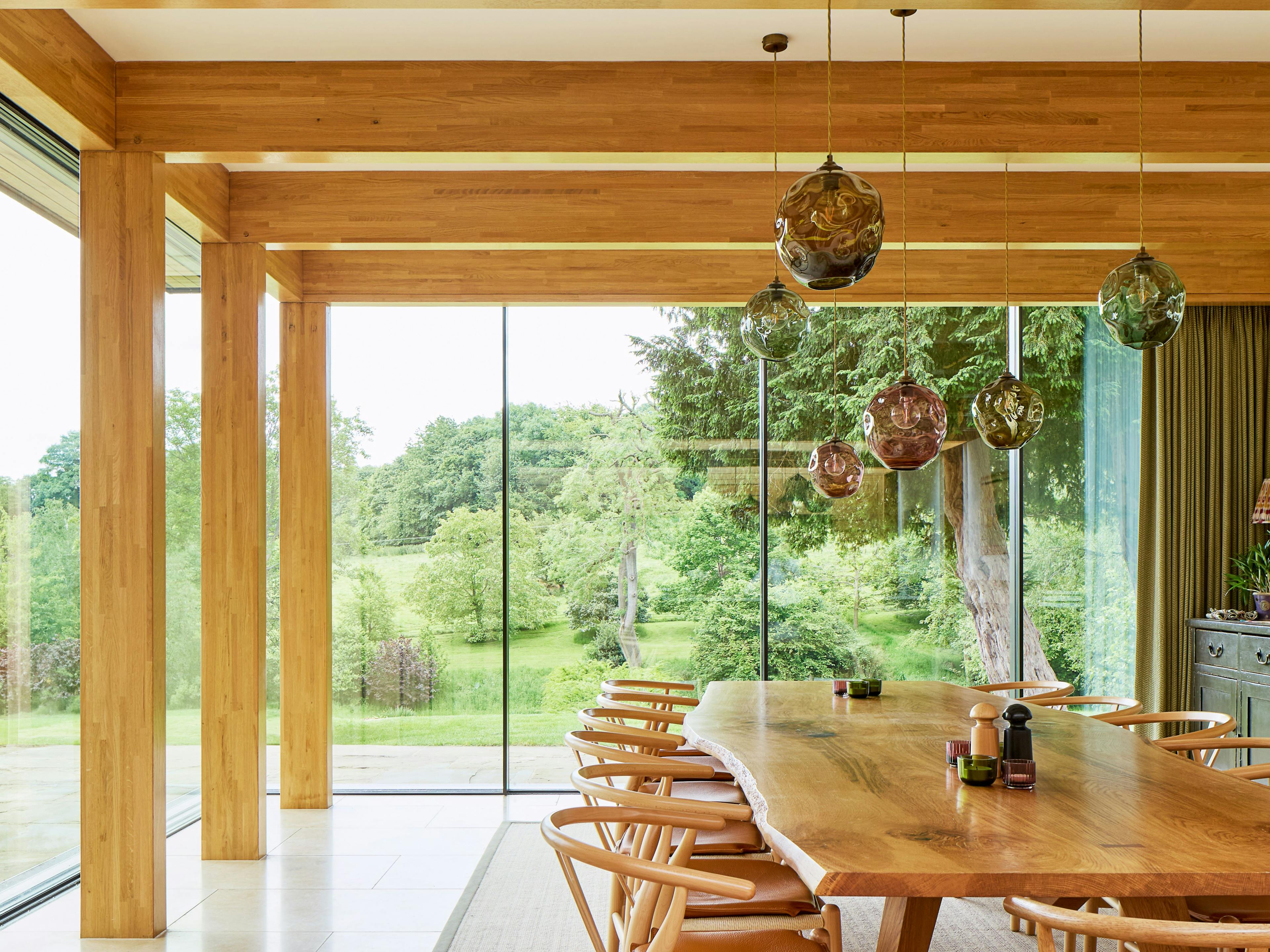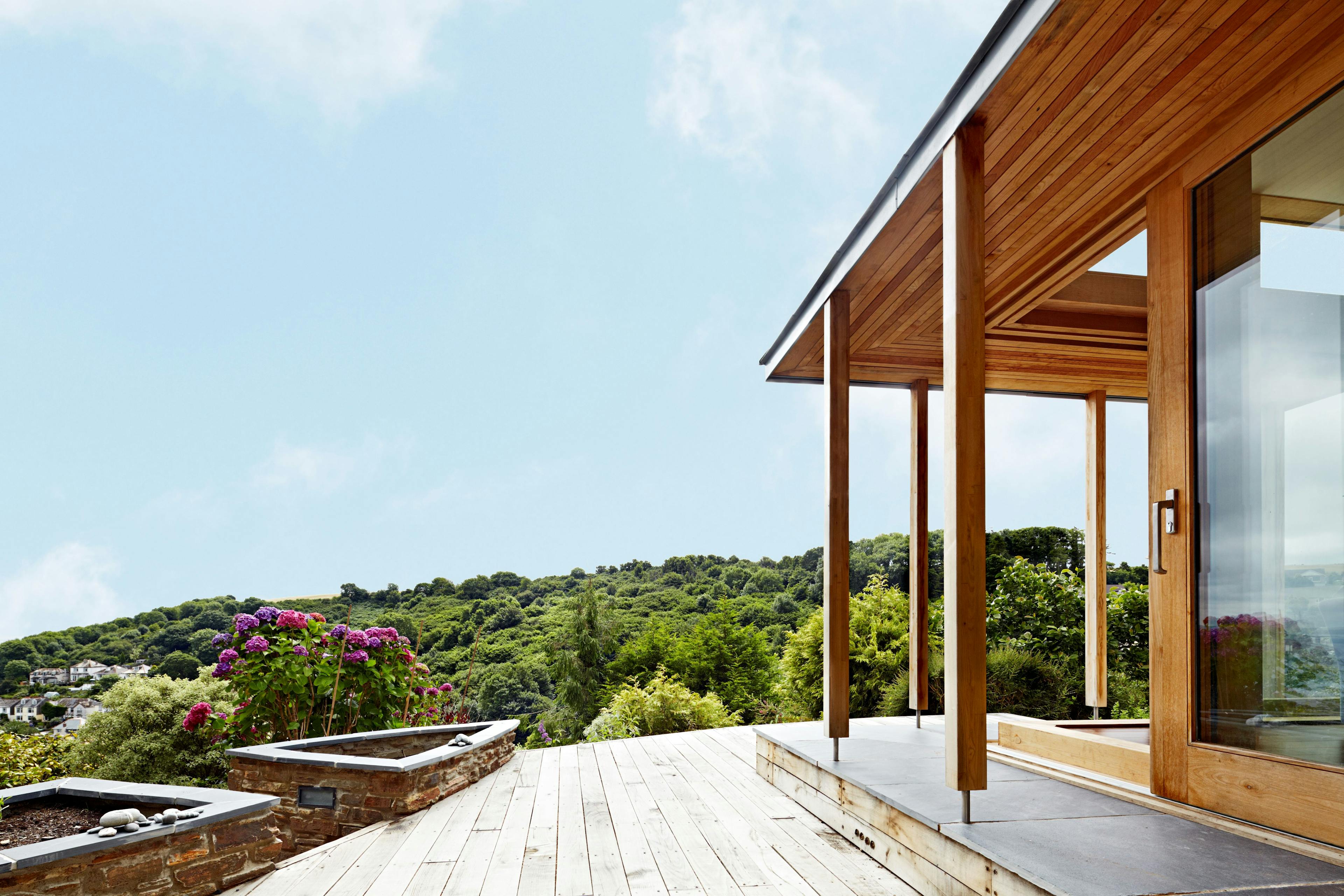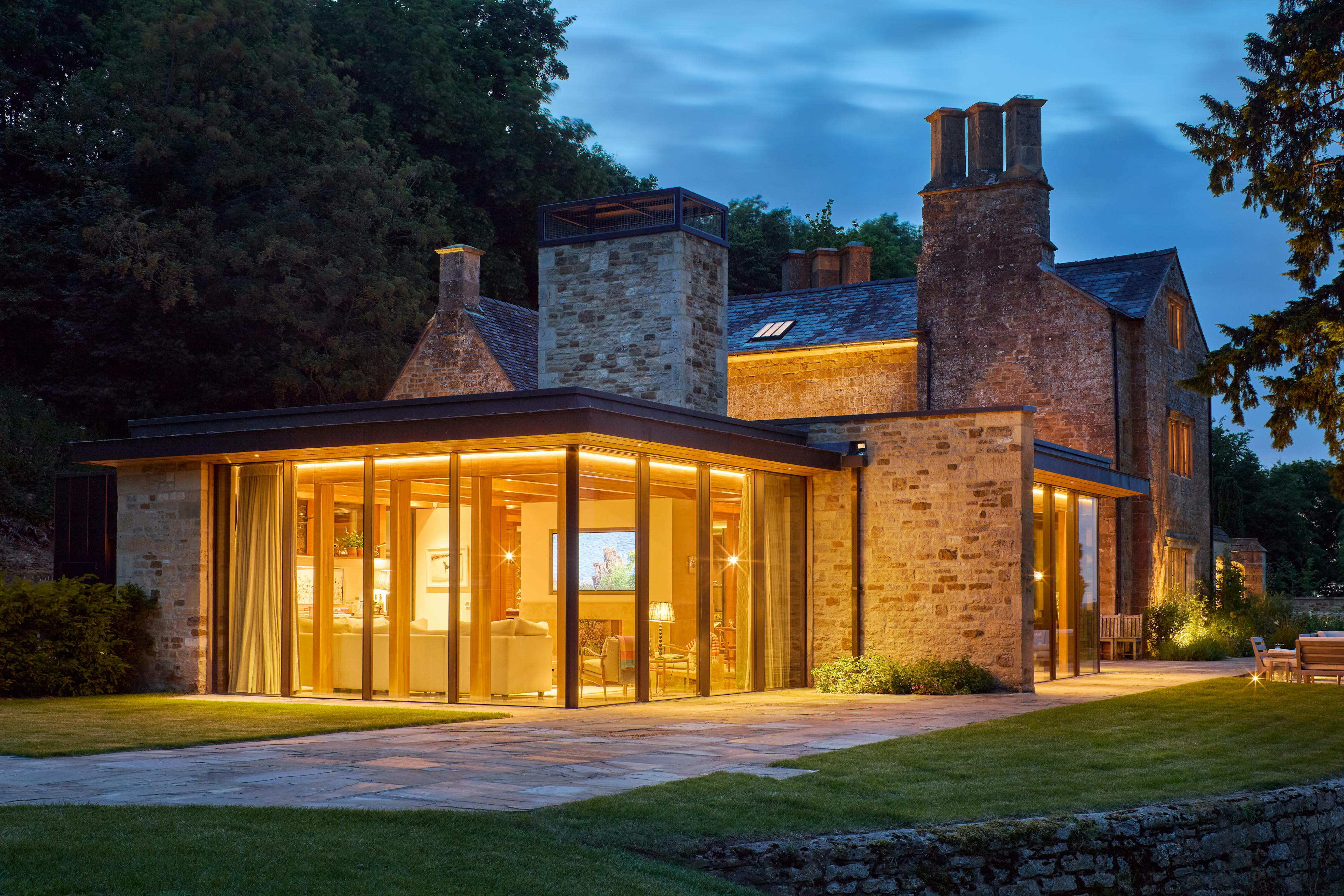Glulam
While we specialise in traditional post and beam timber construction, we are equally committed to embracing innovative and evolving materials applying our proven construction principles across all timber types - including Glulam (glued-laminated timber). As a high-performance, engineered material, glulam offers outstanding strength, stability, and design flexibility - and we understand how to harness its full potential. From the initial brief and design phase through to glazing and frame finishes, we offer expert guidance at every stage to ensure your project meets the highest standards.
We work with a wide variety of species, from softwoods like spruce, Douglas fir, and larch, to premium hardwoods such as oak, ash, and chestnut. Every project is carefully considered - from selecting the right species to advising on durability, finishes, and coatings for both interior and exterior use.

A dining area in an oak glulam extension
The strength of glulam beams allows for wide spaces to be spanned easily

A chestnut glulam living room extension with a cantilevered corner for uninterrupted views
Glulam can be used in place of steel and to create highly bespoke shapes and structures

The living room of an oak glulam framed house
Glulam is a natural choice for a contemporary style
About
About
Glulam is formed from thin strips, or ‘lamella’, of fresh sawn timber. The lamella are then kiln-dried, graded for defects and glued together under compression to form beams. This engineered timber provides an extremely strong and stable material for construction. It can be used in place of steel as an engineering solution, providing straight and uniform timbers to bespoke lengths, and allows highly bespoke shapes and structures to be made to measure.
The engineering grading of glulam is consistent in the softwood and hardwood categories, though the natural durability of the different species ranges markedly when used externally. We can advise on naturally durable options, or the coatings that can be applied to glulam to achieve the project requirements.
Softwood glulam is available in Douglas fir, spruce and larch glulam. They are equivalent in strength and the most commonly used in timber construction. They vary widely in cost and durability, meaning the selection of species is typically dependent on budget and intended application. Spruce and Douglas fir glulam are not naturally durable for external use and better suited to internal use. Larch glulam, with a high natural resin content, can be used externally without protective coatings.
Hardwood glulam is available in oak, chestnut and ash. These are more expensive than softwood glulam, so less common. They are exquisite materials, and in the correct application an incredible material for timber construction. Oak glulam is particularly durable, and therefore flexible - it can be used internally, externally and in harsh environments.
Whether you're looking to replace steel with a sustainable, natural material or need bespoke shapes and spans that meet complex design requirements, our team knows how to get the most out of glulam. We provide practical, design-led solutions backed by technical know-how - making us a trusted partner for architects, builders, and clients across the UK.
Find out more about some of the incredible projects we’ve worked on using glulam and you can read more about building with glulam.
If you have any questions and would like to know more about our services, please get in touch.
- Origin
Softwood and hardwoods grow extensively across Western and Northern Europe
- Qualities
Strong and stable timber, highly predictable material, easily engineered, available in large lengths and depths, broad range of species means suitable for most budget and design options
- Typical usage
Contemporary timber architecture; large spanning structures; public and commercial buildings; refined residential architecture

